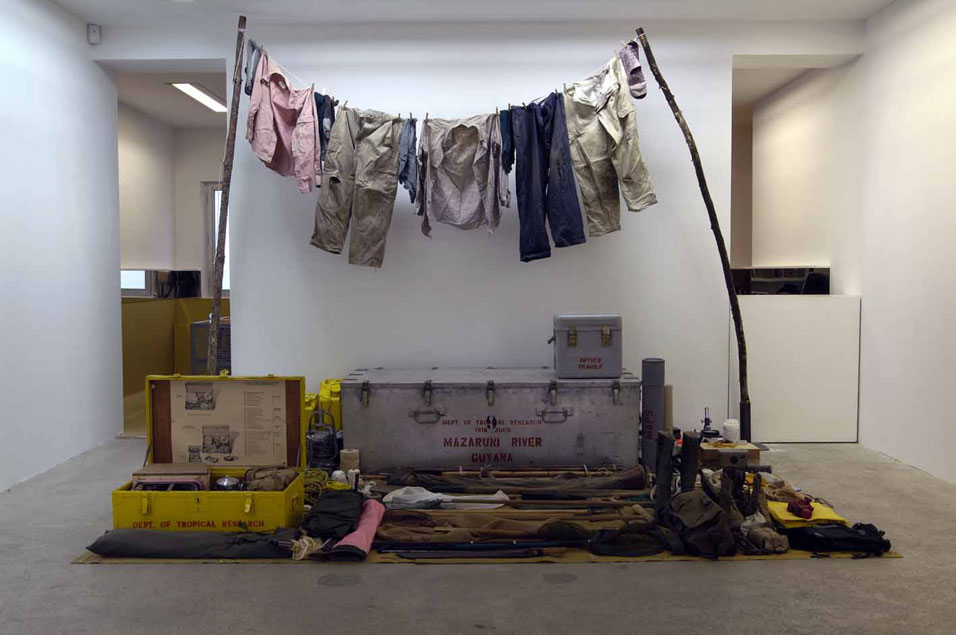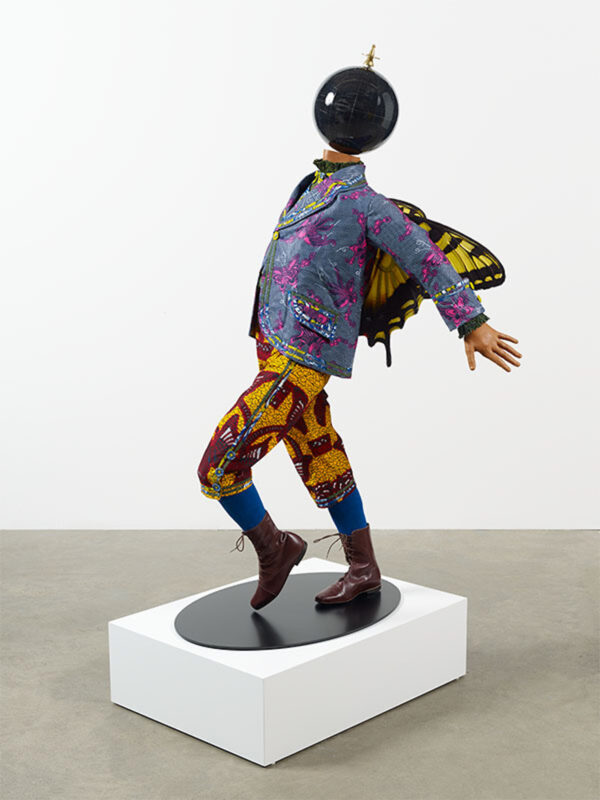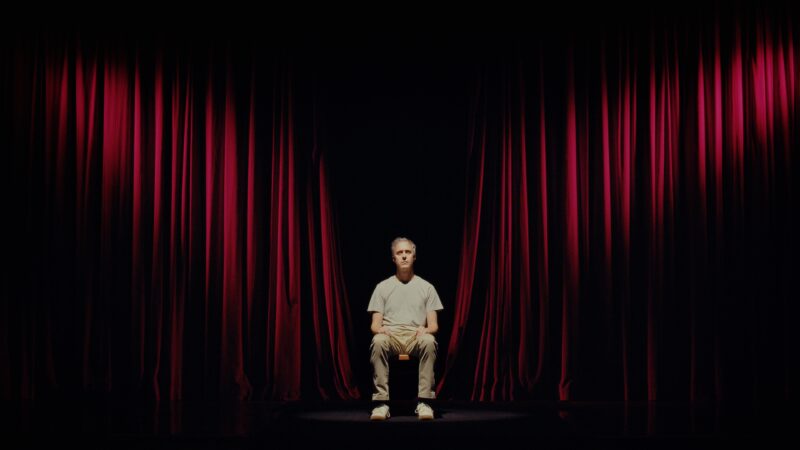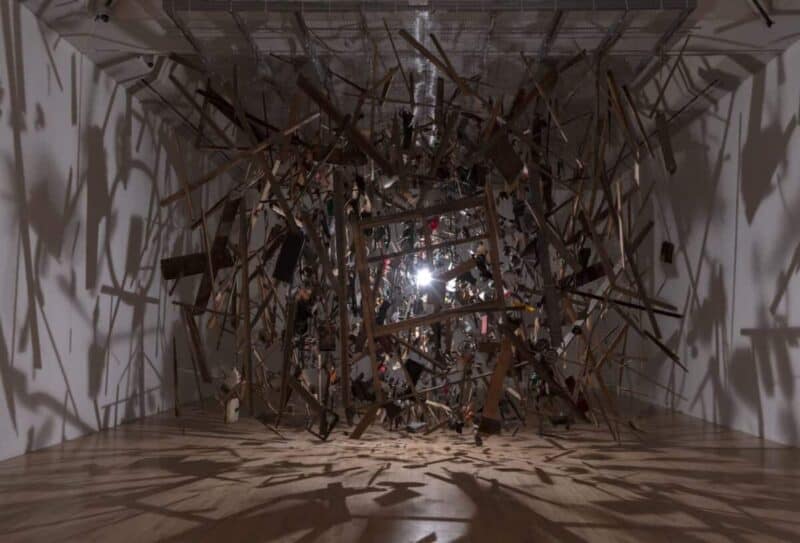
Mark Dion, Department of Tropical Research, 2005. Mixed media. Dimension variable. Courtesy: in Situ fabienne leclerc, Paris. Photo: Marc Domage.
A Duck for Mr. Darwin is a group exhibition of nine contemporary artists exploring evolutionary thinking and the theory of natural selection. Transforming Level 3 Gallery of Baltic Centre for Contemporary Art from Friday 10 April, the show will feature sculpture, drawing, painting, film and installation. Focusing on the legacy of Charles Darwin’s ideas, this exhibition is informed by the spirit of experimentation which was so distinctive to the time in which he lived.
The mindset of the Victorian naturalist and his contemporaries, their sense of scientific experimentation and genuine wonder at their respective discoveries are shared by several of the artists in the exhibition. Ideas of isolated, closed worlds of meaning and ordered systems recur throughout, as does the location of the Galapagos Islands . Several of the artists’ visited the Islands and have made work as a result. These remarkable islands were pivotal to the story of the development of Darwin ’s theory and have continued to exert a fascination to many.
The art mixes fact and fiction, experimentation and observation, methods of display and personal research. Collectively these artists reveal facets of Darwin ’s extraordinary ideas. The exhibition presents work by nine international contemporary artists including a number of new commissions – a large working wormery by Tania Kovats, a museum tableau on the early Victorian explorers by Mark Dion and a new sound work by Andrew Dodds.
Mark Dion ( USA ) whose practice and methods look at history and its presentation will create an installation that concerns some of the lesser known Victorian naturalists and tropical collectors. These buccaneering characters, including H.W. Bates, Richard Spruce and Alfred Russel Wallace boldly ventured to remote locations like the Amazon in the 1850’s and were part of a colonial endeavour and early science. Since the 1980’s Dion has developed and constructed installations, re-creating laboratories and museum displays, looking at ways of ordering knowledge and the classification of systems.
Tania Kovats ( UK ) is an artist who has recently completed a commission to create the Darwin Canopy, an artwork entitled TREE set into the ceiling of the Natural History Museum, London , that celebrates the life and work of Charles Darwin. For BALTIC, Kovat’s continues her exploration of Darwin ’s work by creating Worm, a fully working wormery that will change over the course of the exhibition. Earthworms fascinated Darwin throughout his life and were the subject of his last publication. Kovats who has a long-standing interest in geology frequently makes work that responds to what she describes as “geological explicit landscapes”.
Marcus Coates ( UK ) whose practice has continually questioned the ways in which we relate to other species, presents two new works which were made whilst on a recent trip to the Galapagos Islands . Intelligent Design, a film which captures a mating ritual of giant tortoises on the island and Human Report for Channel 9, Galapagos TV where Coates dresses up as a native bird for local television to address the reality of evolution on the island today.
Charles Avery ( UK ) has created a new environment of drawings and sculpture. This forms part of his ongoing project, The Islanders where through drawing and sculpture Avery describes the topology, cosmology and inhabitants of an imaginary island. This island has been inspired in part by Avery’s childhood spent on the island of Mull , off the west coast of Scotland . For BALTIC, Avery presents a sculpture entitled One Armed Snake and a number of drawings including one of a bar and gambling emporium in Onomatopoeia – a town on Avery’s island.
Dorothy Cross (IRL) has been making significant works since the late 80’s across a variety of media. Cross’s work often has a strong sculptural presence. Her imagery is drawn from a unique vision and sometimes visceral relationship with nature. Stage, a film created by Cross in 2007 whilst on a visit to the Galapagos Island, was made to be shown in the Unitarian Church, Shrewsbury which Charles Darwin attended with his mother as a child. It is a conversation with a friend which combines questions on the possibility of art on the Galapagos Islands , personal reflections, scientific enquiry, and fragments of writing and poetry. Other works in the BALTIC exhibition include Sapiens, and Jellyfish Lake.
Andrew Dodds ( UK ) draws on his research visit to the Galapagos Islands in 2001 and his long standing interest in the wider social and cultural implications of Darwin ’s theories. Dodds is a sculptor with a cross media approach and who adopts a range of roles and strategies within his practice. For a new work at BALTIC Dodds looks at the contestations between evolutionary theory and creationism and its role within contemporary teachings, specifically in the North East region.
Mark Fairnington ( UK ) known for his meticulously detailed paintings of insects and animals has created Tally, a large painting of a four year old stud bull. The domestication of animals and our capacity to breed, cross fertilise and to make different forms and hybrids through the knowledge of genetics today perhaps compels us as much as it did in Darwin ’s day. Alongside this are a series of recent paintings of images of the eyes of wild animals, which were presented and prepared for museum display.
Ben Jeans Houghton (UK) a recent Fine Art graduate from Northumbria University , Newcastle will present On the Ark and I, a durational performance taking place throughout the length of the exhibition. Jeans Houghton creates art within self imposed structures. Exploiting his own attention to minutiae, he has created a scientific workshop, and complete environment that he perpetually reorders.
Conrad Shawcross ( UK ) is renowned for his ambitious works that engage such disciplines as physics, biology, geometry, philosophy and cosmology. Pre-Retroscope V comprises a hand-constructed wooden rowing boat and a series of objects collected by Shawcross as he navigated the River Lea in London last summer. The boat incorporates a circular track system, and camera, which make a 360 degree panoramic film of the horizon in a poetically futile attempt to capture a moment or experience in its entirety. A compelling fusion of performative artistic practice with scientific discovery and urban exploration, Pre-Retroscope V gently nods to the impossibility of a singular knowledge, or of a total understanding of our surroundings at any one time.
A Duck for Mr. Darwin has been curated by Alessandro Vincentelli (Acting Head of Programme) at BALTIC and devised to coincide with the Darwin 200 programme of celebrations and events.
The title references the story of an exchange between the young naturalists Alfred Russel Wallace who sent a particular specimen, a domestic duck from the island of Lombok to Darwin in 1857. Within a year a second parcel arrived from the Malay jungle containing Wallace’s short twenty page essay on species variation. This package proved to be the catalyst precipitating the publishing of Darwin ’s monumental theory – the book we now know as the Origin of Species.









